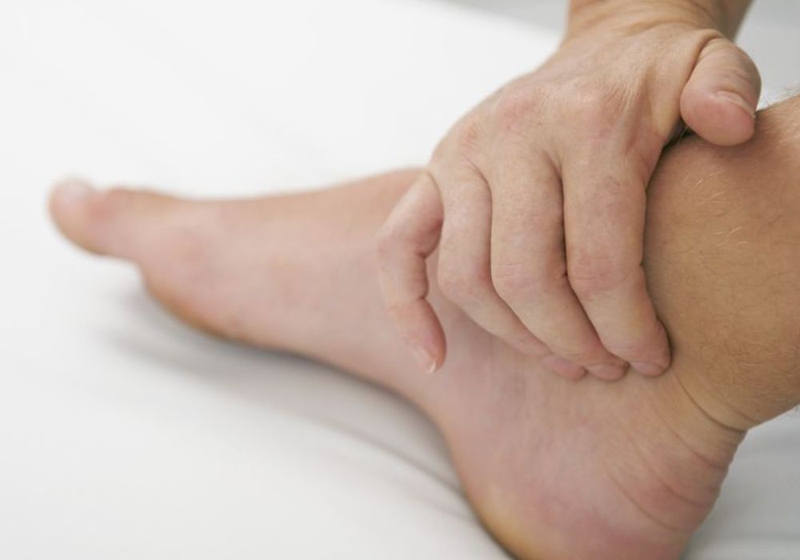The term swelling is a medical condition wherein some body organs are enlarged due to pregnancy, injury and/or other kinds of medical condition. The swelling mostly occurs due to fluid retention in the organs. It can be harmful and lead to severe medical conditions if left untreated. However, swelling can be easily treated at home through simple therapies and treatment. In most cases, professional medical help is no longer needed as long as immediate attention is given. Learn these several different ways on how to reduce swelling at home.

Home Treatment on Swelling Caused by Injuries
Cold Therapy
Cold therapy is among the most common and easiest ways used as immediate treatment to reduce swelling. This is done by applying a cold object like an ice pack to the affected area. The cold therapy treatment temporarily restricts blood flow to the swollen area and slows down the cellular metabolism. For the first several days of the swelling, do a cold therapy treatment for 20 to 30 minutes every day until the swelling subsides.
Compression
Compression therapy acts much like cold therapy for swelling. Compression restricts the blood flow and fluids that causes the swelling on the swollen area which can prevent further swelling and reduce it too. Elastic bandages, static bandages and/or cold compress can work for the compression therapy. However, be sure to apply only the right amount of pressure. When the swelling starts to subside, you may also adjust the pressure on the compression bandages.
Elevation
The elevation technique prevents swelling by reducing the blood flow in that area and restricting body fluids from dropping and collecting on the injured area. For elevation technique, it is advisable to elevate the swollen area above the heart level. For example, for injuries on the legs, keep the legs elevated while seated and prop them up with soft pillows while lying down.
Medication
Taking medication to quickly alleviate swelling is only advisable as long as the proper dosage guidelines are followed and the medication does not contraindicate with other current medications of the individual. Nonsteroidal anti-inflammatory drugs are effective for pain relief on the injury and can also reduce the swelling. However, be sure to limit the use of NSAIDs as they may also bring unwanted side effects. Consult your physician for professional advice.
Rest
Resting the injured body part is one effective way to reduce the swelling. When you use the injured body part longer, blood flow and fluid buildup may continue to raise which can then make the swelling even bigger or the injury even worse. Keep the injured area rested for a few days until the tissues start to heal.
Home Treatment for All Types of Swelling
Lessen sodium intake
High sodium or salt diet can sometimes lead to swelling because sodium will cause your body to retain water. Infrequent high salt meals may not cause swelling, however, frequent high sodium meals may lead to high retention of fluids which can cause swelling. When this happens, all you need to do is to decrease your sodium intake and lessen the salt in your meals.
Exercise (for swollen legs)
Common cases of swelling are on the legs and this are likely caused by fluid retention in the tissues. Exercise can help loosen up the tissues and restrict the water from retaining to cause the swelling.
Antibiotic ointments for scrapes and cuts
Some scrapes and cuts, even the smallest ones, can sometimes become painful and swollen. When this happens, be sure to clean out the wound regularly to prevent infection. Also, apply antibiotic ointments to reduce swelling and heal faster.
Increase Bromelain intake
Bromelain, an enzyme that can be found in pineapple stems, is rich in anti-inflammatory properties. You can also get it from eating the pineapple fruit itself.
Increase Quercetin intake
Quercetin, like Bromelain, is also rich in anti-inflammatory properties. Quercetin is a flavanoid that can be found in green leafy vegetables, citrus fruits and apples. Increasing intake of these fruits and vegetables can help reduce swelling quickly.
Take apple cider vinegar
Dehydration and electrolyte depletion are some causes of swelling that is not from injury. Apple cider vinegar is rich in potassium that can quickly alleviate symptoms of dehydration and electrolyte depletion. Additionally, apple cider vinegar has anti-inflammatory properties.
Drink Dandelion tea
Dandelion, a small yellow flower, has surprisingly good effects for both fluid retention and dehydration, which are common causes for swelling. Dandelion tea can help keep the hydration balance of the body.
Contrast therapy
Contrast therapy is the alternation between cold compress and hot compress. Alternating between hot and cold can quickly restrict the blood flow to the swollen area and reduce the swelling.
When It’s Time to Seek Medical Help
Swelling causes may range from simple injuries to severe medical conditions. Regardless of the causes, swelling is not a normal process of the body and it indicates that something is wrong. If swelling is caused by severe injuries or trauma, seek medical help for the injury first. The following also indicates that it is time to seek professional medical help.
When the swelling becomes chronic even after first aid treatments at home and is not caused by an injury;
When there are other serious symptoms accompanied by swelling, either from injury or other medical conditions.
Knowing the first aid treatments on how to reduce swelling can save you from serious infections and hefty hospital bills. Take note of these first aid treatments and try them if needed.
View All Comments /Add Comment